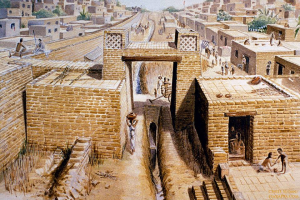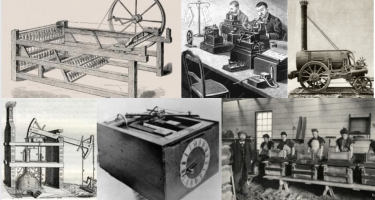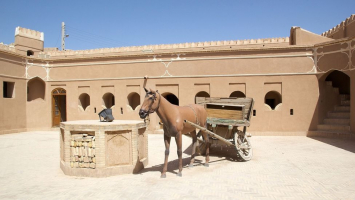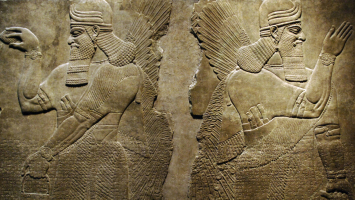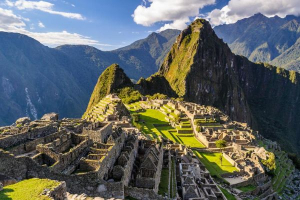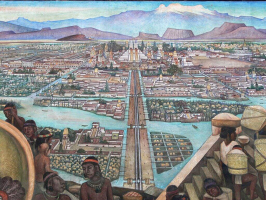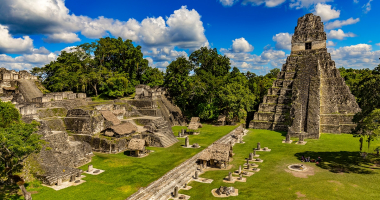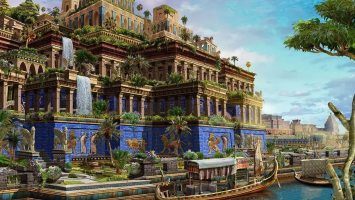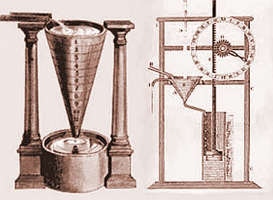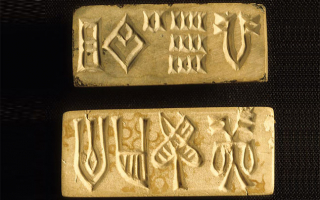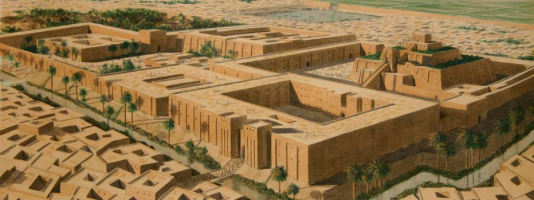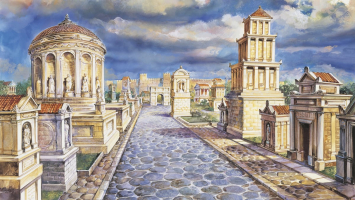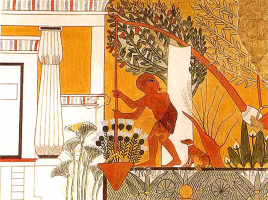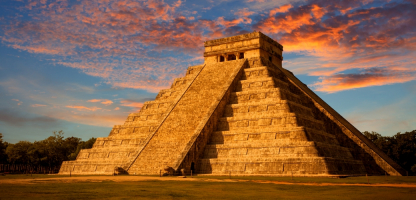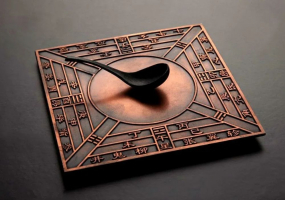Top 11 Inventions of Indus Valley Civilization
Between 3300 to 1300 BCE, or the Bronze Age, the Indus Valley Civilization flourished. The Harappan Civilization, which spanned northwest India to northeast ... read more...Afghanistan, was another name for it. This civilization's past is thought to have been obscure, and it's uncertain how it came to an end. In addition to inexplicable decline and history, academics are also interested in inventions and creations. There are numerous significant inventions of the Indus Valley Civilization, and the top 11 of them are mentioned below with their details.
-
One of the most important inventions of Idus Valey Civilization was the button. The Indus Valley civilization's Kot Diji era (c. 2800-2600 BC), the Tomb of the Eagles in Scotland (2200-1800 BC), as well as Bronze Age sites in China (c. 2000-1500 BC), Ancient Rome, and other places, all employed buttons, and button-like artifacts as seals or ornaments rather than as fasteners.
Buttons were first created in the Indus Valley Civilization to be utilized as ornaments for various events and activities, as opposed to their usual use as fasteners. These geometrically shaped buttons from that period were constructed with holes cut through them and were used to fasten some garments with thread. Additionally, some of the most expensive buttons were constructed from copper and alloys. However, during the Bronze Age, seashell regulators were famous and frequently utilized.
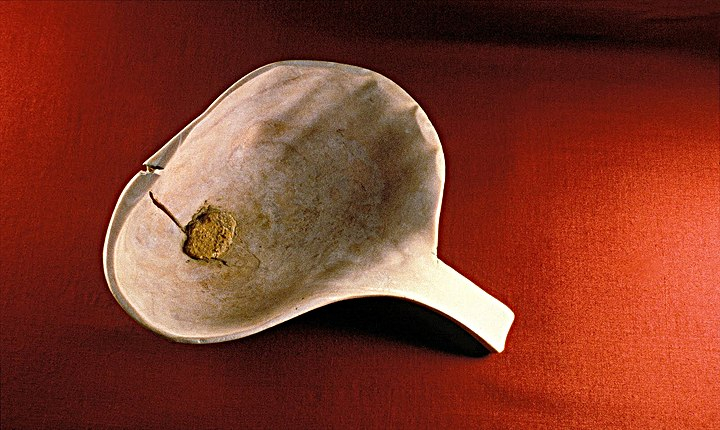
Photo: https://www.harappa.com/ 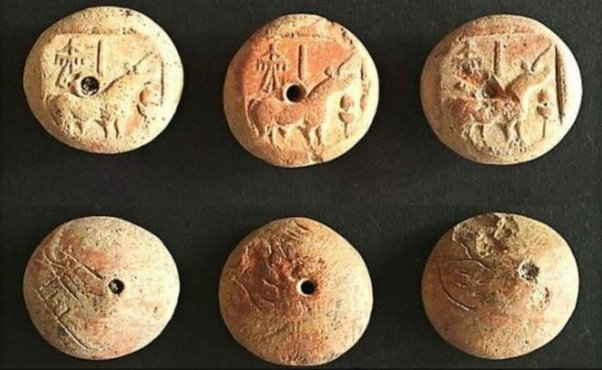
Photo: https://www.quora.com/ -
The stepwell was initially discovered in Dholavira in India and Mohenjo Daro, one of the most well-known archaeological sites in Pakistan. In these locations, the proof of their existence was initially observed. The famed Great Bath at Mohenjo Daro is three times bigger than the first stepwell discovered in the Indus Valley. It was discovered 5,000 years ago or thereabouts.
One particular monument, abandoned by 2500 BCE, incorporates a bathing pool, steps leading down to the water, and figures of some religious significance into one construction, demonstrating the three characteristics of step-wells in the subcontinent.
The Buddhists and Jains of India incorporated step-wells into their building in the early decades immediately preceding the Common Era. Buddhism spread throughout the world, bringing with it both the wells and a particular style of ceremonial bathing. Step wells made of rock on the subcontinent date from 200 to 400 CE. Then the tiered ponds at Bhinmal (850-950 CE) and the wells at Dhank (550-625 CE) were built.
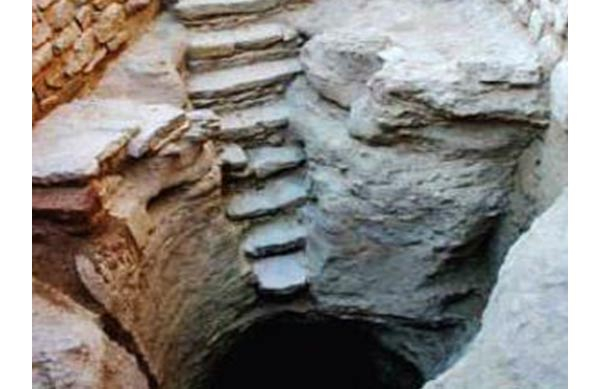
Photo: https://www.ancient-origins.net/ 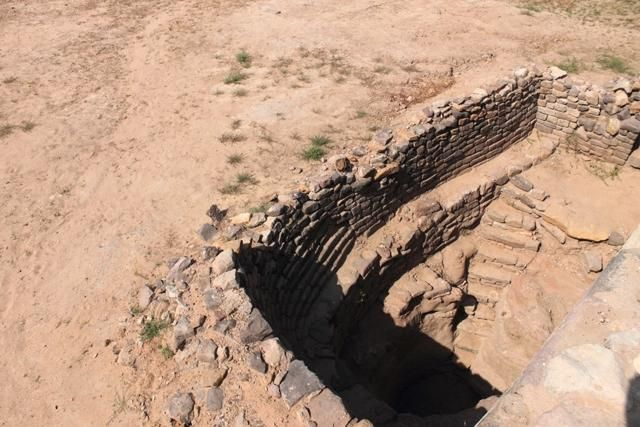
Photo: https://blogvirasatehind.wordpress.com/ -
By 2000 BCE, cockfighting was a pastime and one of the uses for fighting cock in the Indus Valley Civilization in what is now Pakistan. According to the Encyclopaedia Britannica (2008), the game bird is probably the one that is most similar to the Indian red jungle fowl (Gallus gallus), which is thought to be the ancestor of all domestic chickens. In ancient times, the Indian subcontinent, China, the Persian Empire, and other Eastern nations were big fans of the sport, which Themistocles brought to Greece (c. 524–460 BCE). Throughout Sicily and Asia Minor, the sport became popular. The agricultural writer Columella (first century CE) noted that its devotees frequently wasted their entire fortune in betting on the side of the pit after the Romans pretended to hate this "Greek pleasure" for a long period.
The combatants, known as gamecocks (not to be confused with game birds), are raised and trained specifically to have greater endurance and power. Game fowl refers to both male and female chickens of this breed. All males of the same species are aggressive against cocks by congenital nature. On the result of the game, bets are frequently placed.
Due in part to the physical harm that the cocks cause to one another, which is occasionally made worse by fastening metal spurs to the cocks' natural spurs, cockfighting is a blood sport. Even though not all fights end in death, the cocks may sustain severe bodily harm. In some parts of the world, cockfighting is still a common event; in other nations, it is either outright illegal or subject to legal restrictions. Many times, proponents of the "age-old sport" cite the cultural and religious significance of cockfighting as justifications for its continued existence.
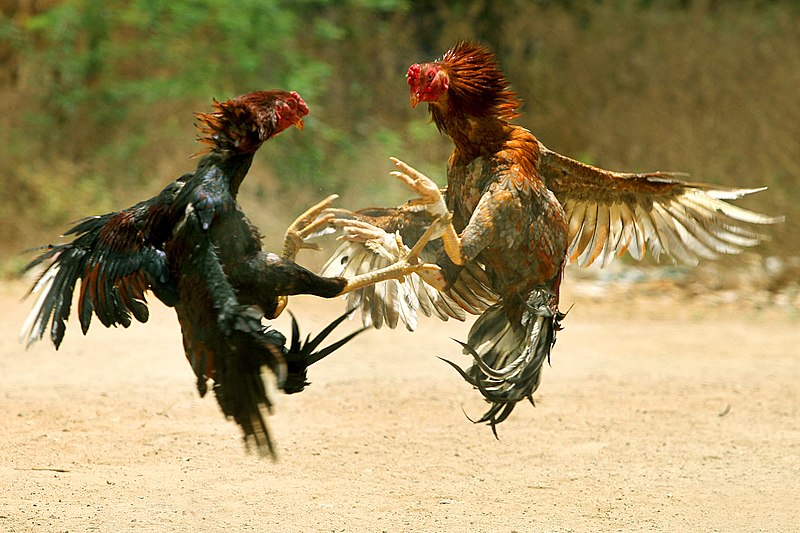
Photo: https://en.wikipedia.org/ 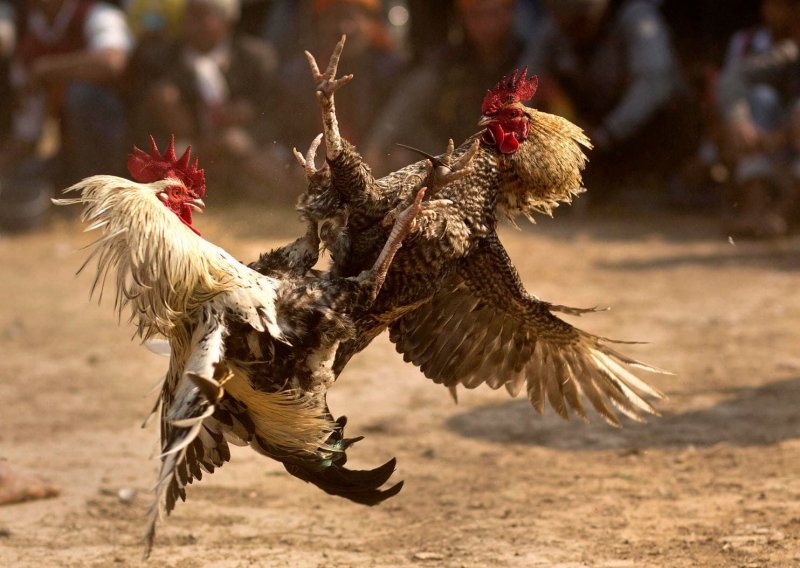
Photo: https://www.pinterest.com/ -
Recent demonstrations of the first urban sanitation systems in the world took place in important Indus Valley Civilization cities like Harappa and Mohenjo-Daro. In the principal towns of Harappa and Mohenjo-Daro, water and drainage systems were available to every home. The main streets were lined with covered gravity sewers, which received wastewater.
The sewage and drainage systems of that period turned out to be the most advanced and widely used ones. They were utilized everywhere in the Indus region, which at the time had the most sophisticated sanitation infrastructure.
The development and effectiveness of the sewage and drainage systems were such that the water used in residences was drawn from the wells, and the drainage pipes were directly connected to the operations of the main roadways.
The link between the input of safe water and the outflow of waste was controlled in such a way that it could not affect in any unfavorable ways because cleanliness was one of the most amazing deals at that time.
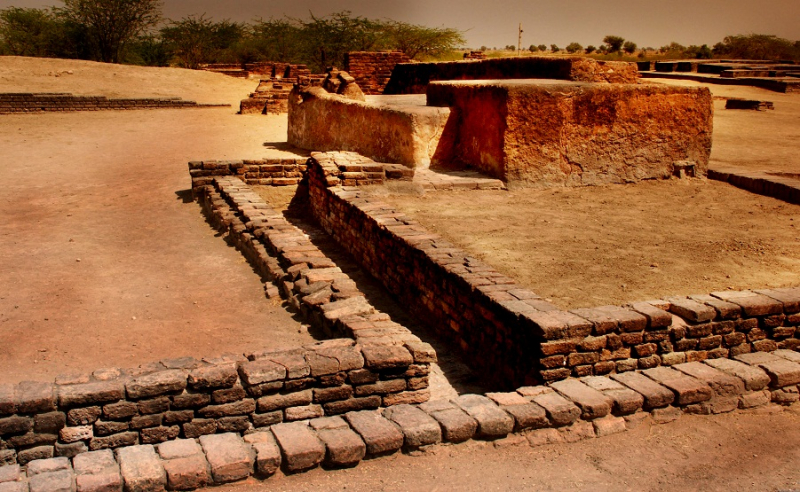
Photo: https://thewire.in/ 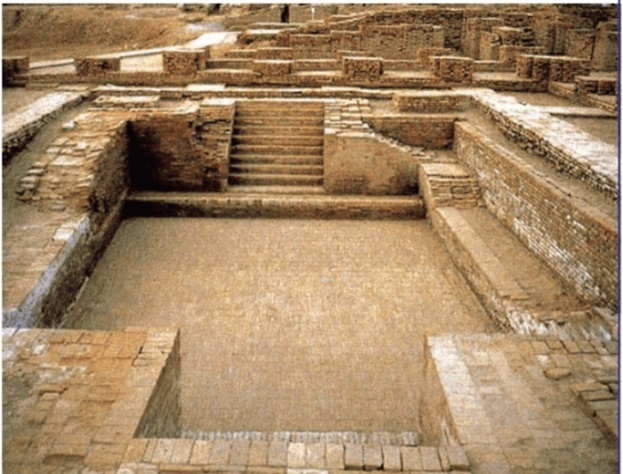
Photo: https://medium.com/ -
The Indus Valley Civilization built its dwellings and living spaces in a well-organized way. For construction, they utilized lime and baked bricks of uniform size. Bricks that were resistant to moisture were used in the city planning at the time, giving the dwellings and the entire city a well-planned appearance.
The cities were planned in such a way that it appeared to have been done with dedication. The water storage was situated on the lower ground, while the residential portions were situated on the upper lands. By 2600 BC, Mohenjo-Daro, Harappa, and other significant Indus Valley cities had been constructed with blocks that were divided by a grid of straight, east-west, and north-south running streets. Small lanes separated each block.
Primarily in high traffic areas like toilets, perfectly kept buildings with outstanding sanitation were on exhibit and in use. Many homes also had wells, and the drains were all directly connected to the main conduit under the street.
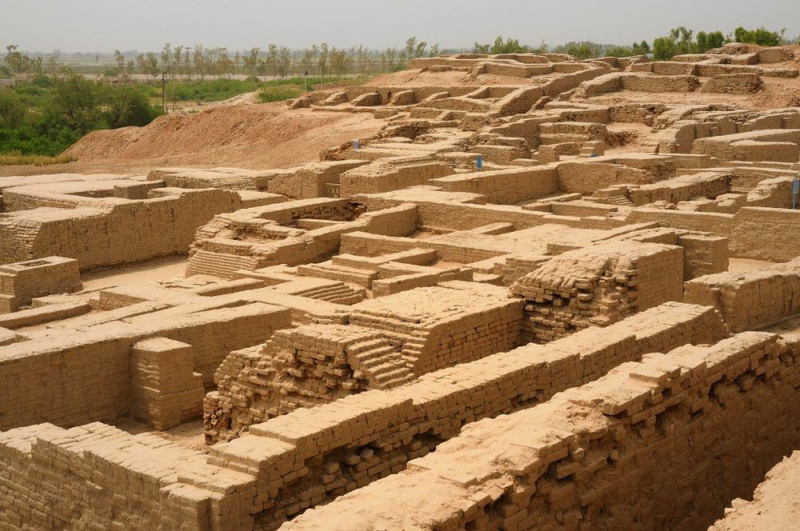
Photo: https://www.historyofayurveda.org/ 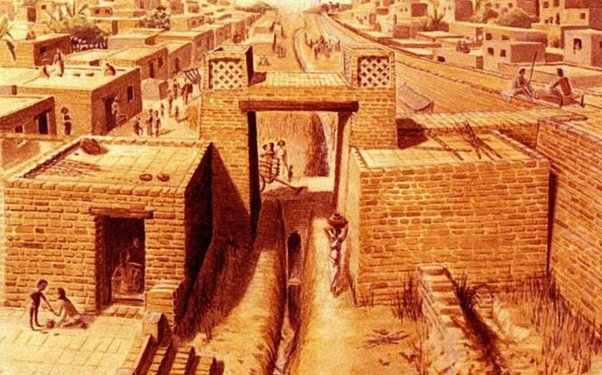
Photo: https://www.quora.com/ -
The Indus Valley Civilization made advancements like cutting seals and exchanging products. The most effective activity done during the time was undoubtedly the specialized seal carving and clay stamping for the trafficking of products. The carving of seals was used to mark clay on goods intended for trade as well as to identify the property. There have also been numerous Indus Valley seals discovered in the historic towns of Mesopotamia. They still used the seals from that period.
The precisely balanced, precise weighing stones were traded together with the seal carvings. Because of their uniform size and superior carving, they were in high demand.
One of the most well-known cities of the Indus Valley Civilization, Harappa, is where the standardized weights were first created. Then, it was revealed that the weights were all graduated sizes and that they were all following the Harappan binary weight system. In the villages that were built during that time, every weight was utilized.
The smallest in the series weighed 0.856 grams, and the heaviest was 13.7 grams. The growth of civilization and the advancement of technology were both aided by the creation of these trustworthy weights. Even the bricks and religious structures uncovered during that time were weighed and measured using these consistent standards.
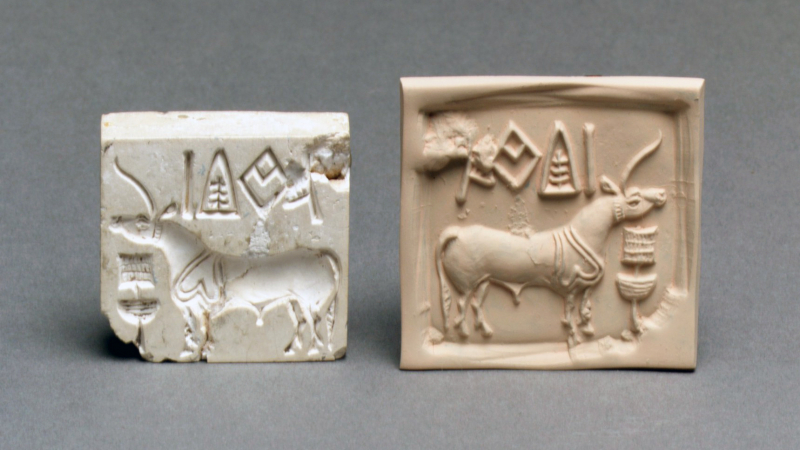
Photo: https://smarthistory.org/ 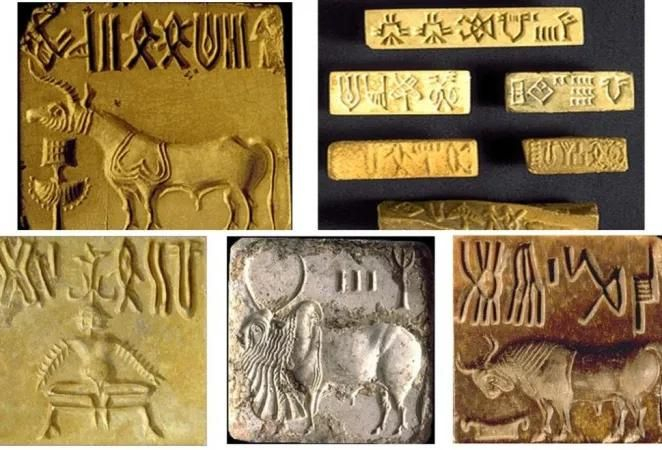
Photo: https://detechter.com/ -
The Indus Valley civilization created a corpus of symbols known as the Indus script, sometimes referred to as the Harappan script. It is challenging to determine whether or not these symbols made up a writing system employed to record the as-of-yet undocumented languages of the Indus Valley civilization because the majority of inscriptions featuring them are incredibly brief. The script has not yet been deciphered despite numerous tries, but work is still being done. The writing has not undergone any substantial alterations throughout time, and there is no documented bilingual inscription to aid in its interpretation. However, depending on the region, part of the syntax (if that is what it may be called) differs.
The first seal with Indus lettering, dated 1875, was found with an illustration by Alexander Cunningham. Since the initial inscribed object was unearthed, about 4,000 more have been located. Pruthvi Dev, Nagdevta, Siva Linga, Pasupathi, Surya Dev, and a few trees were only a handful of the many gods that were revered. Hinduism adherents would be those who worship these deities.
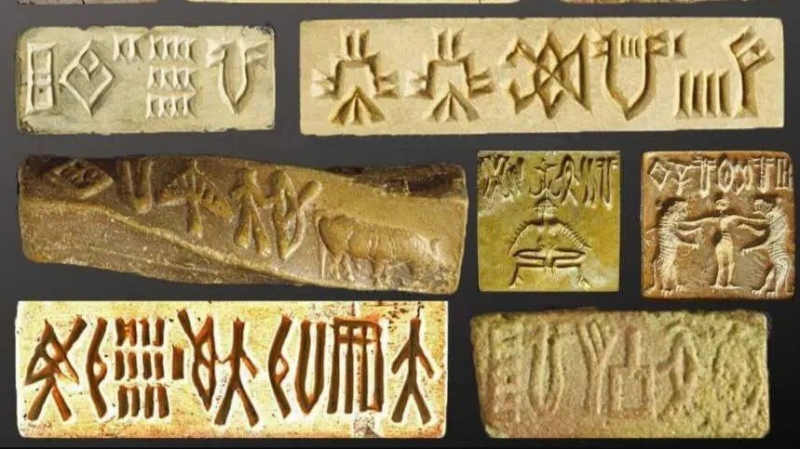
Photo: https://www.thearchaeologist.org/ 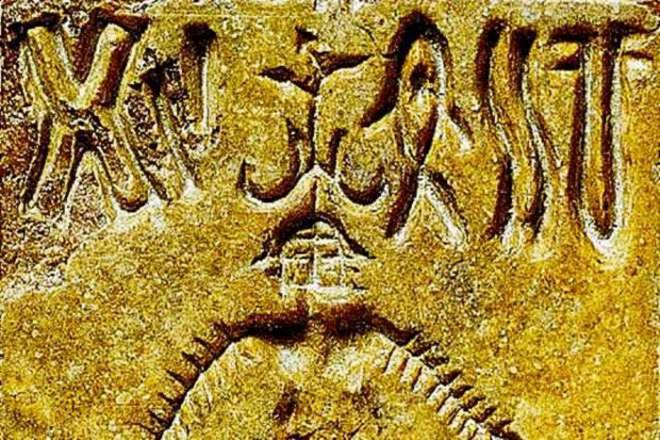
Photo: https://www.financialexpress.com/ -
The Indus Valley Civilization's distinctive artwork, sculptures, ceramics, seals, and jewelry were its most important discoveries.
Stoneware bangles were made using the earliest stonewares, which were the forerunners of porcelain, at the Indus Valley Civilization sites of Harappa and Mohenjo Daro. The decorations that were in use were set with semi-precious stones, gold, and jewels. They had a high value because of their meticulous work and distinctive qualities.
The sketches, paintings, and painted terracotta pots were created with skill in the craft of work. In addition to this, stamps featuring images of a few animals, including tigers, buffaloes, elephants, and rhinos, were well-known items from that period. A few antique soapstone objects with elaborate artistic marks were found contained within the bricks. The first bronze sculpture is believed to be Dancing Girl from Mohenjo-Daro, which dates to the Harappan culture around 2500 BCE. In Kali-began, where they used to exercise their religion, the Fire-altars were discovered. They developed the techniques for employing fire to create objects, containers, and ornaments.
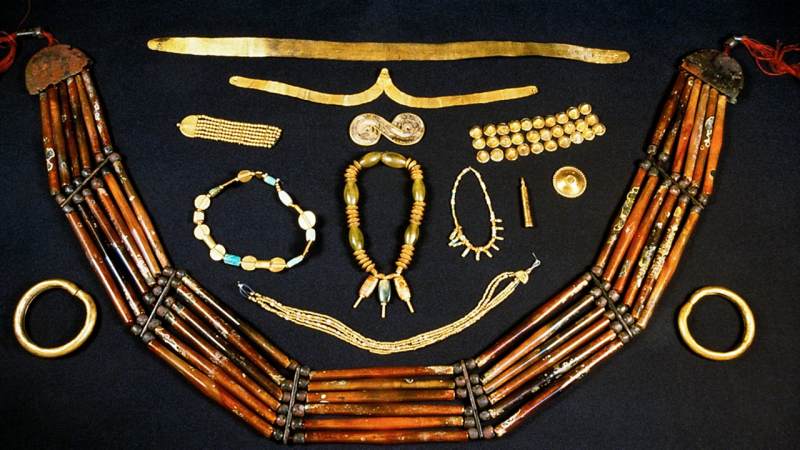
Photo: https://www.bbc.co.uk/ 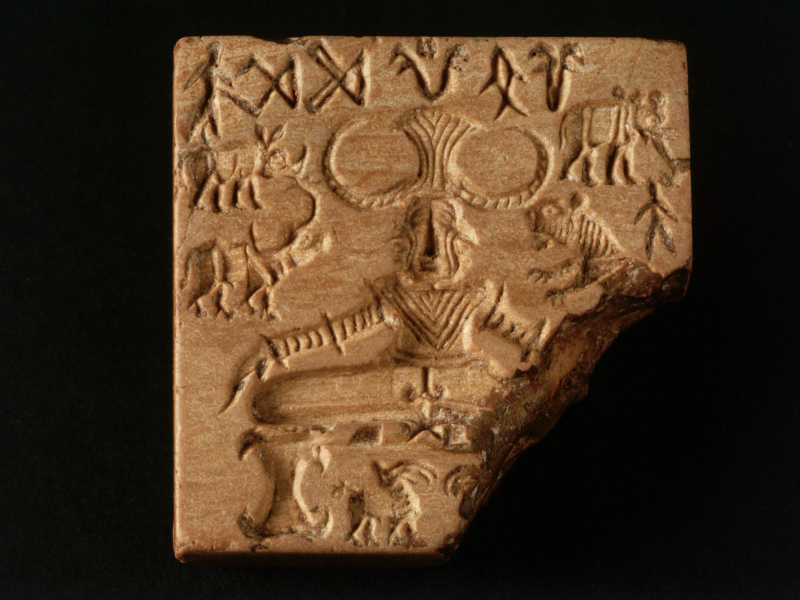
Photo: https://www.thoughtco.com/ -
The Indus Valley Civilization is renowned for discovering numerous cooking techniques. Cooking techniques had to be developed to prepare a variety of foods, such as wheat, barley, sesame, peas, and other pulses, that were readily available.
Mud ovens were used to cook the basic staple foods, such as wheat and barley, both above and below ground. Reputable archaeologists with experience in baking and cooking identified the variety of these mud ovens.
The rest of the food was prepared in standard cooking pots while the bread was baked in baking ovens. The circular trenches discovered at the location where wheat and other grains were stored were the most well-known. Lime plaster was applied to the pits.
The cuisine and cooking of the Indus civilization became the basis for contemporary South Asian "curry" meals. The Harappans consumed a wide range of meals, such as grains and pulses, vegetables, fruits, and animal products, in addition to several seasonings and spices that are still popular in South Asia today. According to recent studies, the mainstays of nutrition and agriculture were probably the breeding of cattle, goats, and sheep, with the addition of wheat and barley cultivation aided by winter rains.

Photo: https://www.asianscientist.com/ 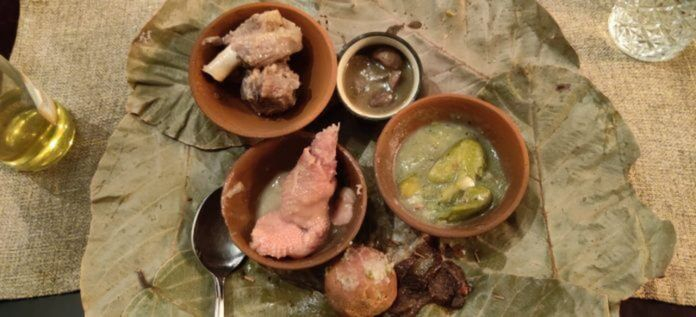
Photo: https://upsc-syllabus.com/ -
One of the most famous inventions of Idus Valey Civilization is the signboard. The Dholavira Signboard, one of the most important finds at Dholavira, was made in one of the side rooms of the northern city gateway. On a massive wooden board, the Harappans had sorted and put chunks of the mineral gypsum to create ten gigantic symbols or characters.
The board eventually collapsed onto itself. The letter arrangement was still there despite the wood's deterioration. The signboard's letters resemble the big bricks that were used to build the adjacent walls. The board that the letters were written on was around 3 m (9.8 ft) long and each sign is roughly 37 cm (15 in) high. With one symbol occurring four times, the inscription is one of the longest in the Indus script, and this, along with its size and public nature, makes it a crucial piece of evidence used by scholars who contend that the Indus script reflects full literacy. This site also has a four-sign inscription with huge letters on sandstone, which is said to be the first one of its kind at any Harappan site.
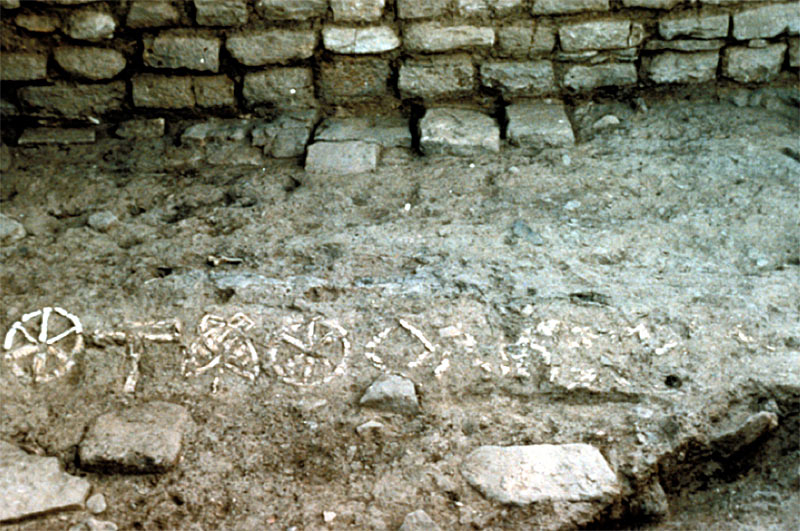
Photo: https://www.harappa.com/ 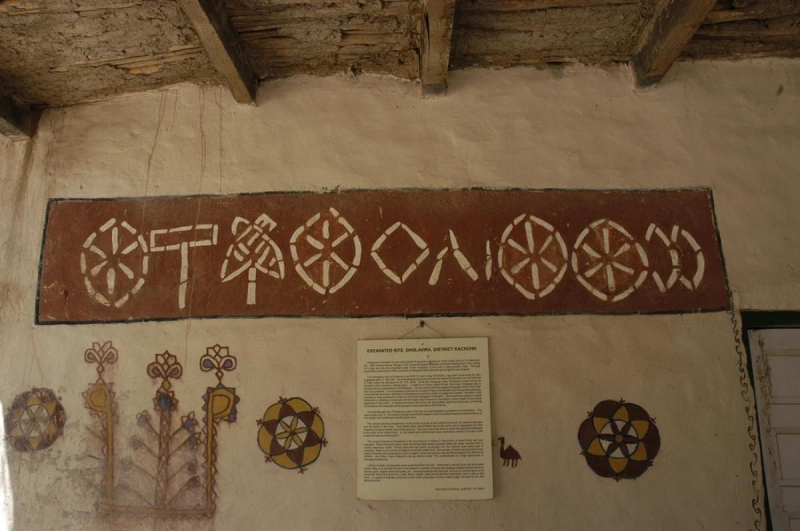
Photo: https://exploringindianheritage.wordpress.com/ -
One of the earliest civilizations to create a standard system of weights and measures was that of the Indus Valley. A copper-alloy bar from one of its locations is the oldest measuring rod known to science. Around 2400 BCE, a ruler measuring approximately 1/16 inch, or slightly less than 2 mm, was discovered at the Lothal during the unrevealing. It has been determined to be around 4400 years old.
The ruler is divided into sections that measure 1.32 inches (33.5 mm), and these sections are marked out with astounding accuracy to within 0.005 of an inch. These units correspond to the dimensions of ancient bricks found across IVC. One of these rulers is calibrated to 1.704 mm, which is the tiniest division ever identified on a Bronze Age scale. The accuracy of the weights derived from IVC sites has been astounding. They use a binary decimal system, with each unit weighing roughly 0.85 grams and going from 1, 2, 4, 8, 16, up to 12,800. A few of the weights are so small that jewelers could have used them to weigh precious metals.
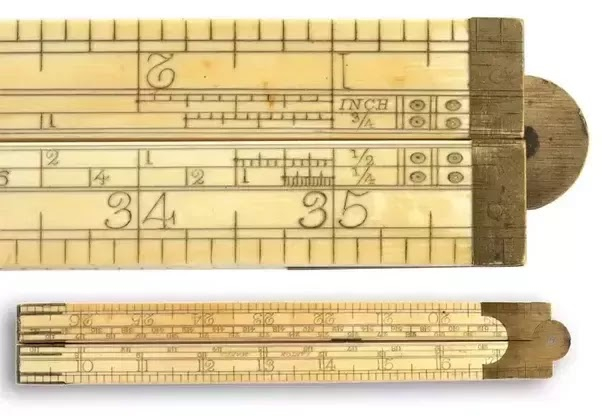
Photo: https://lifeispreciousnotrace.blogspot.com/ 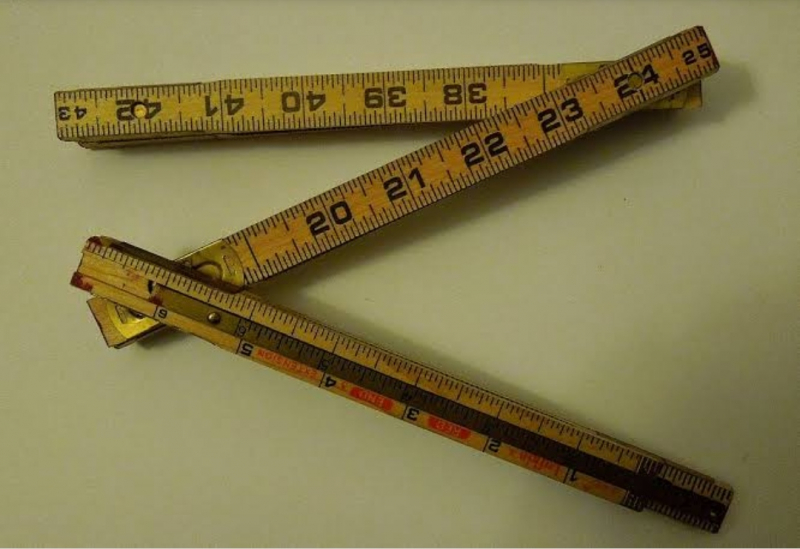
Photo: https://kreately.in/













